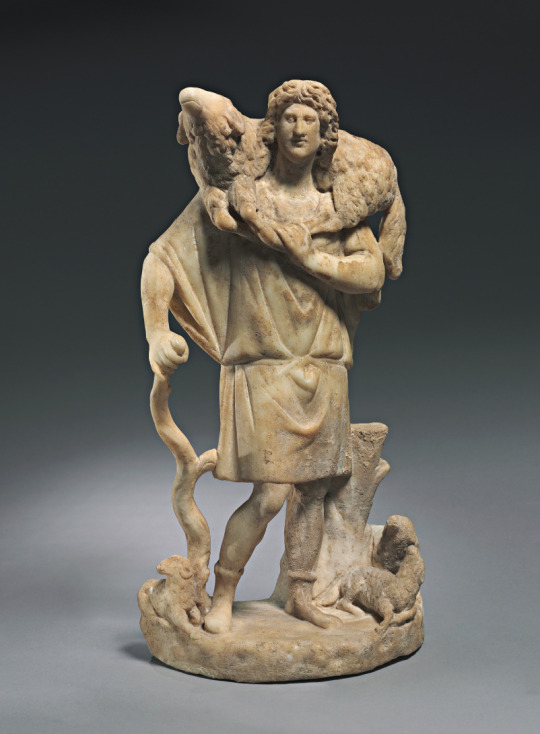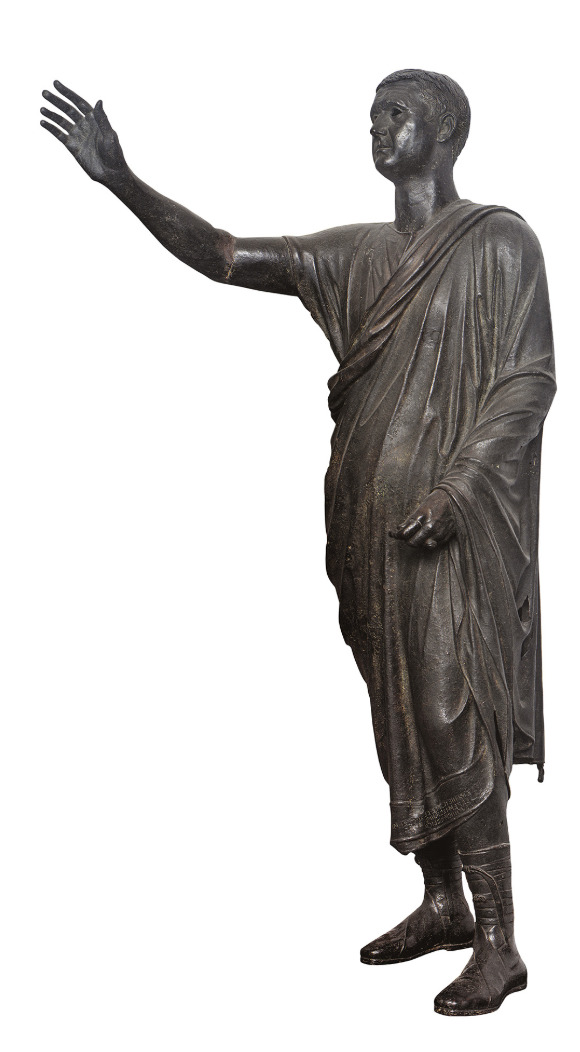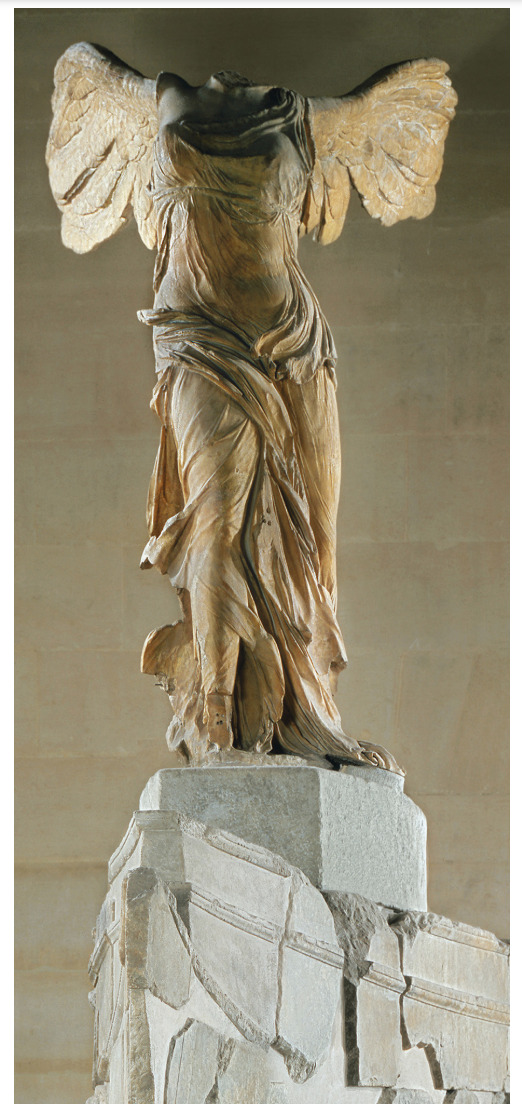Society is constantly changing with every moment that passes and all around the world things change differently. One person cannot keep track of every waking moment, but the beauty in life is we have artists all around the world for centuries who have been documenting all these changes for us! Artists can use these changes in their cultures to take snapshots in the history being created around them by creating sculptures that represent the current values around them in ways words cannot describe. The sculptures created are so interesting because they are physical representations of what the artist can see in their lives! Throughout history you can see the differences and similarities that arise in sculptures styles, values, and compositions as different places all around the world develop their cultures.
Don't wanna be here? Send us removal request.
Text
In the end,
I know that artwork will continue to change as our world continues to change and today’s artwork will end up in classes to represent the history of our culture and as an artist that’s exciting. There’s so much more to the artwork than what appears face value and people who don’t take the time to look into the history of a culture or the values will never be able to see that for themselves. The purpose behind the artwork that an artist is trying to show you is the most important part of an artwork because it goes beyond just what you see and resonates to what you feel. Styles will change, values will change, and ideals will change but the artwork is here to immortalize it for us so we can look back on how we’ve grown as humans.
0 notes
Photo

Liao dynasty, 10th–12th-century CE. Wood with paint and gold, 7'11" × 5'5″ (2.41 × 1.65 m).
SEATED GUANYIN BODHISATTVA
The figure shown is in a relaxed seated position and it gives the viewer a sense of comfort because of it. The composition of the piece is heavy towards the bottom but it works because of the face being isolated towards the top as people’s eyes are naturally drawn to faces. The colors of the figure really resonated with me because I love red and anything that has a pop of red to it I will automatically fall for. The posture is called royal ease and it really. shows how relaxed the leader can be. as they need to stay calm as they deal . with . all of their royal issues that the people shouldn’t have to stress over.
Bodhisattva’s were an important for Buddhism at this time because the people in China were going through a lot of political changes and they needed to rely on their religion rather than their leaders. Guanyin was the Bodhisattva of infinite compassion and this was a great time to show that representation of art is important because as people go through tough times they rely on the arts to get them through it. Great art comes from great suffering and this artwork being used as inspiration to get through those tough times is really interesting to see as you look back in history.
0 notes
Photo

From South India. Chola dynasty, 11th-century CE. Bronze, 3'7 7/8" × 3'4″ (1.11 × 1.01 m). Cleveland Museum of Art. Purchase from the J. H. Wade Fund, 1930.331.
SHIVA NATARAJA (SHIVA AS LORD OF THE DANCE)
The style of this sculpture as my second bronze sculpture is very different from the first because the Indian culture strays very different from the Romans. The figure is shown in a completely unnatural pose that would be impossible for a. mortal to accomplish. Not only for the fact the multiple limbs, but the grace the figure holds within a ring of fire isn’t something you would see in a sculpture by the Romans. Shiva is shown making the have no fear gesture to the viewer which just accentuates the powerful aura that he gives off. He is clearly stylized so he looks more than a human could be and I feel like it really responds well to the purpose of a statue like this that would be used for worship and encouragement of their religious values.
The cultural differences between the Romans and Indians can clearly be seen through these two bronze sculptures and as they develop they focus on what’s important to their values. It’s interesting to see because they both represent power but it’s always a different sense of power between them because of these cultural differences.
0 notes
Photo

Eastern Mediterranean, probably Anatolia (present-day Turkey). The second half of the 3rd century. Marble, height 19½″ (49.5 cm), width 10″ (26 cm), depth 6″ (16.2 cm).
THE GOOD SHEPHERD
Straying away from Romans, but not too far, we come to our next artwork that’s the first of the Christian arts included on my timeline. This is a very rare artwork that’s rarity comes from the fact that it depicts Christian beliefs that were forbidden at this time. The sculpture depicts a natural scene of the life of Jonah the prophet and it’s a very naturalistic sculpture to represent this. His loose stance and gesture overall make it seem like he’s just gazing off into the distance as we get a little sneak peek into his life without him knowing. He isn’t posed to look more muscular or full, and he just stands there so lifelike with his little sheep.
Looking directly into the viewer was common for this time but the. figures weren’t usually as three-dimensional as. Jonah is depicted. And it’s interesting. because this sculpture might have. only survived because . it wasn’t recognizable to anyone besides Christians at the time. This makes it feel like the artwork was an ancient secret that we’re lucky enough to have a glimpse. into and this even includes us in the culture of this time.
0 notes
Photo

Found near Perugia. c. 80 BCE. Bronze, height 5′ 11″ (1.8 m). Museo Archeologico Nazionale, Florence.
AULUS METELLUS
This sculpture is different in how it was made because I haven't included many sculptures not made from stone in my timeline. This was different for the Romans because I didn’t see many bronze sculptures from this time and it’s interesting to me that they did this because the finish is completely different than what you’d see with a more natural finish of a sculpture made from stone that wasn’t glazed in any sort of way. The stance of the figure is also a lot different than other sculptures of this time as the composition of it leads the viewer away from the figure with an outstretched arm. It’s a completely different feeling than to the one you usually see in a sculpture like this and it’s interesting as he seems to be calling to someone, potentially the viewer. This interactive and realistic sculpture is a step in a new direction for Roman art at the time.
This artwork was of political importance as the figure is shown is represented in a way that he’s almost the height of a person, although taller to stand out, and given the attire to represent a politician of this time period. It’s said the purpose of these sculptures was to serve as memorials above columns. This serves a greater purpose because people much like they carry pictures of their loved one's today they could see a reminder of those they loved ones to guide them in the right direction.
0 notes
Photo

From the Temple of Minerva, Portonaccio, Veii. c. 510–500 BCE. Painted terra cotta, height 5′ 10″ (1.8 m). Museo Nazionale di Villa Giulia, Rome.
Master Sculptor Vulca (?), APULU (APOLLO)
This artwork clearly jumps back in time to the Etruscan people and it reflects their personal values. Unlike our last sculpture, this one has a face and features and bears the iconic archaic smile used in most sculptures at this time. As they did not yet represent their models in nude or tighter fit clothing they did still represent their athletic ideal figures with well-defined muscles on this figure. He is meant to show his power as he was in a natural almost fighting stance and stands tall at 5′10″ to intimidate his viewer yet still seem human.
This artwork is a lot more natural with its pose and facial expression and is supposed to focus on how the subject could seem to be alive. This was an important factor in artwork at this time as they strayed away stylistically to less stagnant artworks and artists were free to put a little more movement within their art! I feel like at this time it would be a huge step for their entire society because it’s a complete change in the ways they view artwork and probably changed what they thought they could do with it.
1 note
·
View note
Photo

Roman copy of 1st-century CE. Marble, height 491/2" (1.25 m).
NIKE (VICTORY) OF SAMOTHRACE
This artwork is one of my favorite sculptures of all time, it just resonates with the energy of what I imagine a real angel to feel like. There’s a certain sense of divinity to it and it feels like it’s a real goddess. The way that the robe is so flowy and to know that it looks so soft and light but it’s really a marble is beautiful. The folds of the robe accentuate the natural shape of the figure underneath and the goddess's femininity. She resonates power and unlike the muscular counterparts seen in a lot of other Roman male figures shes got an elegance to her that looks like she could rise above them all.
I feel like this was a really important artwork for the Roman culture because of this divine femininity and it’s very different from other cultures of the same time period. As other cultures were going in different directions the Romans wished to focus on the figurative nature of sculptures and painting with realistic ideal forms. When you think of Rome they were always seen to be very powerful and true to their values I feel like this sculpture really expresses where their focus was at this point in time.
0 notes
Photo

(Menkaure ruled 2490–2472 BCE, Dynasty 4.) From the Menkaure Valley Temple, Giza, Egypt. Graywacke with traces of red and black paint, height 4'61/2″ (1.42 m
MENKAURE (ruled 2490–2472 BCE, Dynasty 4) AND A QUEEN, PROBABLY HIS PRINCIPAL WIFE KHAMERERNEBTY II
I think this work of art is most astounding to me for the fact that it was carved originally from one stone and even with the smallest mistake you cant put it back onto the sculpture because it’s already carved out! These two are a nice representation of Egyptian art of this time as their style is clearly different from the profile figures shown in the last artwork. They are very three-dimensional yet their expressions and facial features aren’t very descriptive of a particular person. It’s shown by the artist that what’s important is their affection towards one another as they hold arms and the woman depends on the ruler, yet stands with him at the same height and importance.
Their cultural values are shown within this artwork in a lot of different aspects. Their figures aren’t particular to the actual depictions of the ruler or his wife they’re both idealized and that was a really important part of Egyptian culture at this time and it differs from other societies we’ve looked at as they abstracted their artwork to show ideals. They still appear very human but they are supposed to be athletic and youthful in nature to reflect their societal views.
1 note
·
View note
Photo

From Susa (present-day Shush, Iran). c. 1792–1750 BCE. Basalt, the height of stele approx. 7′ (2.13 m), the height of relief 28″ (71.1 cm).
STELE OF HAMMURABI
This artwork also uses the natural beauty of the stone-like materials used to not draw any attention away from the importance of the artist’s meaning behind the artwork. The white markings really make this artwork really interesting because it gives you something to look at towards the end of the artwork where your eyes might linger, they’re whispy enough to even be potentially seen as clouds which adds to the beauty. All of the attention from this artwork is drawn to the top of it to exaggerate how important the scene is. They also used the height to show that Hammurabi is depicted was closer to the gods and the political meaning behind the artwork really shows.
This is an iconic artwork for a very different reason from the first because it represents the laws of a culture rather than being used as a trading means. It depicts an important place in his culture’s history as they started to develop laws and punishments to regulate their cultural values which were forward for their time. Artwork of historical value like this that tells the story of an ancient culture is especially valuable to us today because it gives us a peek into the importance of this event to the people who were alive at this time!
0 notes
Photo

From Cernavoda, Romania. c. 4500 BCE. Ceramic, height 41/2'' (11.5 cm).
FIGURES OF A WOMAN AND MAN
These Neotholic figures are extremely stylized yet their style is very consistent! The genderless nature of the woman and man depicted do not have characteristics but their features are clearly not the main focus of their culture. I really love the gesture of these two figures because they seem to be very calm even within their color pallet, the neutral tones really draw to their humanistic elements as their distorted figures push away from that feeling. The composition of both of the artworks is very calming and they seem to be in seated positions common for the average person to be in while praying so this could give them a religious meaning to the recipient of the trade.
The primary role of these figures was said to be used in politics, philosophy, and art. As these figures were used in trading for politics it explains their smaller size, as they would have had to be transported by the ancient practice of not amazon prime 2-day delivery! They’re also a very iconic artwork because of their stylization so I believe these would be very valuable as a means of trading or gifts.
1 note
·
View note